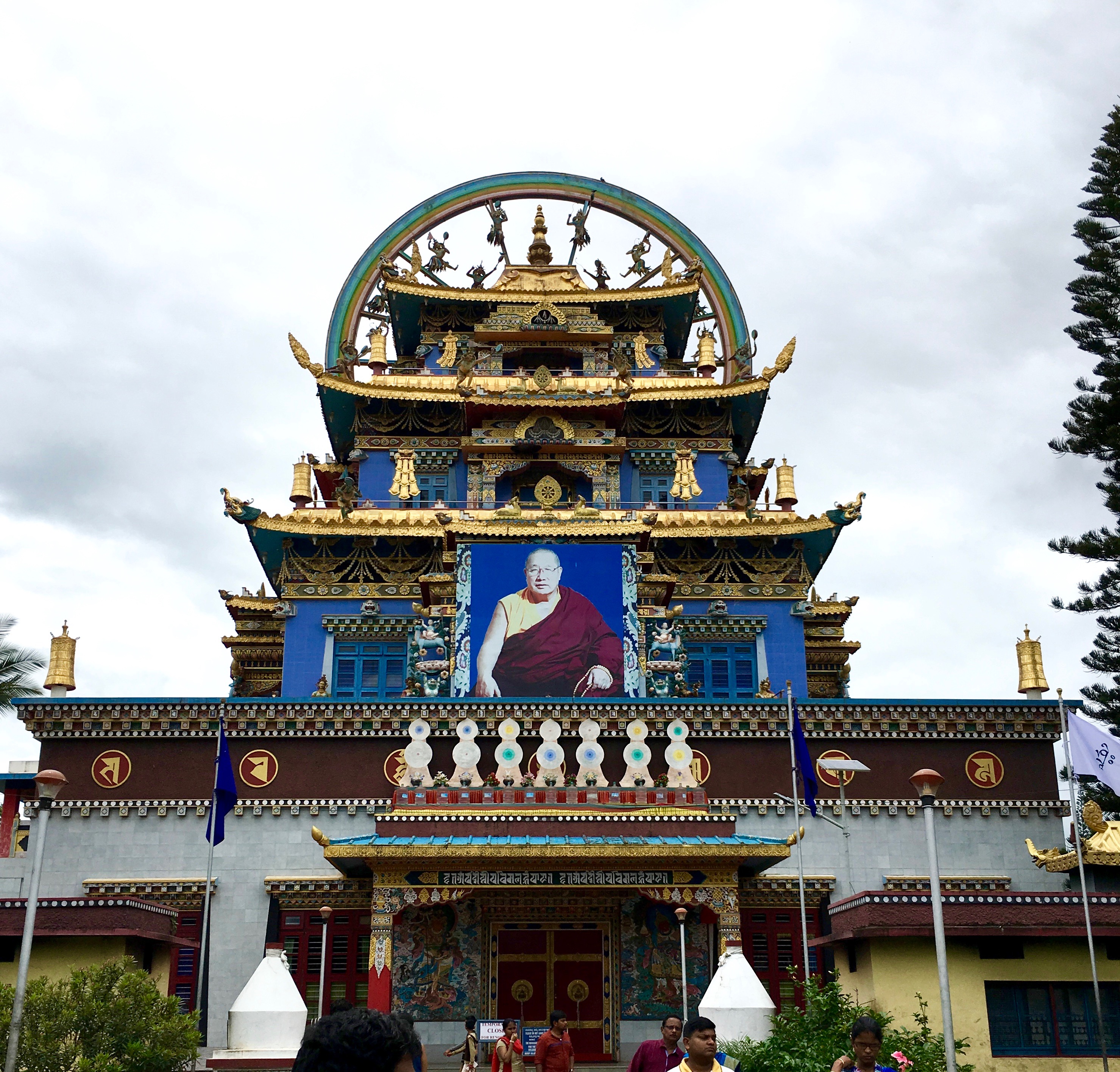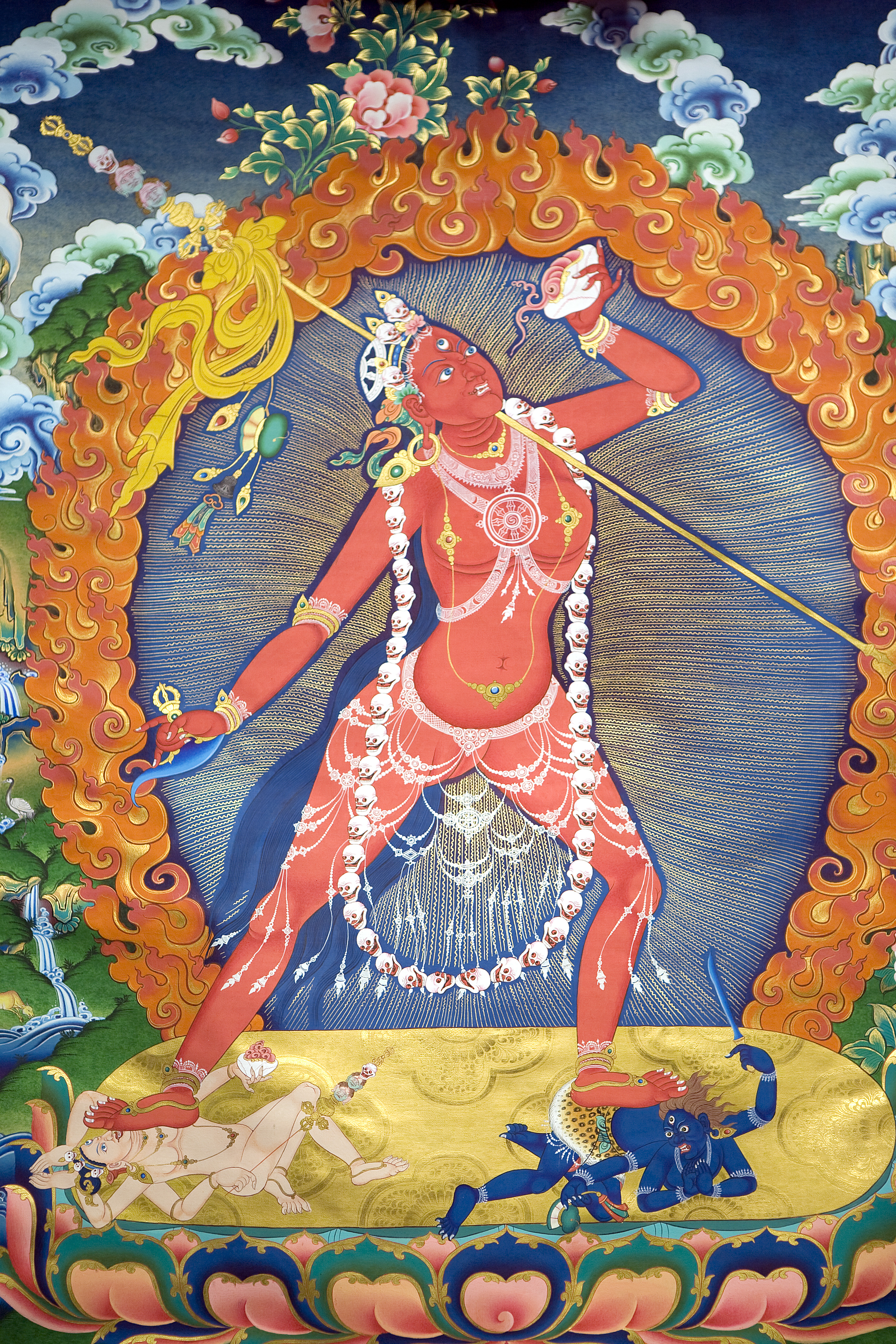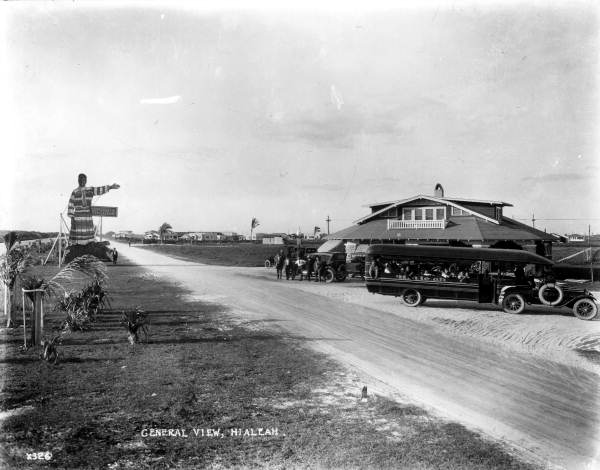|
Jetsunma Ahkon Lhamo
Jetsunma Ahkon Lhamo (born October 12, 1949; born Alyce Louise Zeoli) is a tulku within the Palyul lineage of the Nyingma tradition of Tibetan Buddhism. She gained international attention when she, a Western tulku, Western woman, was enthroned as a reincarnated lama. Since the mid-1980's she has served as spiritual director for Kunzang Palyul Choling, Kunzang Odsal Palyul Changchub Choling, a Buddhist center in Poolesville, Maryland, which includes a large community of western monks and nuns. She also founded a center in Sedona, Arizona, U.S.A., and has small communities of students in California and Australia. Ahkon Lhamo has been described by her teachers, Tibetan lamas Penor Rinpoche, Gyatrul Rinpoche, as well as others such as Jigme Phuntsok, as a dakini or female wisdom being.Zangpo, Ven. Tsering Lama Jampal. ''A Garland of Immortal Wish-fulfilling Trees: The Palyul Tradition of the Nyingmapa'', Snow Lion Publications, pg 186 Biography Early years Zeoli was born in Cana ... [...More Info...] [...Related Items...] OR: [Wikipedia] [Google] [Baidu] |
Brooklyn
Brooklyn is a Boroughs of New York City, borough of New York City located at the westernmost end of Long Island in the New York (state), State of New York. Formerly an independent city, the borough is coextensive with Kings County, one of twelve original counties established under English rule in 1683 in what was then the Province of New York. As of the 2020 United States census, the population stood at 2,736,074, making it the most populous of the five boroughs of New York City, and the most populous Administrative divisions of New York (state)#County, county in the state.Table 2: Population, Land Area, and Population Density by County, New York State - 2020 New York State Department of Health. Accessed January 2, 2024. [...More Info...] [...Related Items...] OR: [Wikipedia] [Google] [Baidu] |
Jigme Phuntsok
Kyabje Khenchen Jigme Phuntsok, ( Tibetan: , Wylie transliteration: 'jigs med phun tshogs 'byung gnas) (1933 – 7 January 2004), was a Nyingma lama and Terton from Sertha Region. His family were Tibetan nomads. At the age of five he was recognized "as a reincarnation of Lerab Lingpa (las rab gling pa, 1856-1926). Known also as Nyala Sogyel (nyag bla bsod rgyal) and Terton Sogyel (gter ston bsod rgyal), Lerab Lingpa was an eclectic and highly influential tantric visionary from the eastern Tibetan area of Nyarong (nyag rong)." He studied Dzogchen at Nubzor Monastery, received novice ordination at 14, and full ordination at 22 (or 1955). In 1980, he founded Larung Gar, the largest Tibetan Buddhist monastic academy. Jigme Phuntsok was the most influential lama of the Nyingma school of Tibetan Buddhism in contemporary Tibet (according to Khenpo Samdup who was his disciple). A Tibetan Buddhist meditation master and renowned teacher of Great Perfection (Dzogchen), he established ... [...More Info...] [...Related Items...] OR: [Wikipedia] [Google] [Baidu] |
Hinayana
Hīnayāna is a Sanskrit term that was at one time applied collectively to the '' Śrāvakayāna'' and '' Pratyekabuddhayāna'' paths of Buddhism. This term appeared around the first or second century. The Hīnayāna is considered as the preliminary or small (''hina'') vehicle (''yana'') of the Buddha's teachings. It is often contrasted with Mahāyāna, the second vehicle of the Buddha's teachings, or the great (''maha'') vehicle (''yana''). The third vehicle of the Buddha's teachings is the Vajrayana, the indestructible (''vajra'') vehicle (''yana''). Western scholars used the term ''Hīnayāna'' to describe the early teachings of Buddhism, as the ''Mahāyāna'' teachings were generally given later. Modern Buddhist scholarship has deprecated the term as pejorative, and instead uses the term ''Nikaya Buddhism'' to refer to early Buddhist schools. ''Hinayana'' has also been inappropriately used as a synonym for Theravada, which is the main tradition of Buddhism in Sri Lanka and S ... [...More Info...] [...Related Items...] OR: [Wikipedia] [Google] [Baidu] |
Bodhisattva Vow
Gandharan relief depicting the ascetic Megha ( Shakyamuni in a past life) prostrating before the past Buddha Dīpaṅkara, c. 2nd century CE ( Swat_District.html" ;"title="Gandhara, Swat District">Swat Valley) The Bodhisattva vow is a vow (Sanskrit: '','' lit. bodhisattva aspiration or resolution; Chinese: 菩薩願, pusa yuan; J. bosatsugan) taken by some Mahāyāna Buddhists to achieve full buddhahood for the sake of all sentient beings. One who has taken the vow is nominally known as a bodhisattva (a being working towards buddhahood). This can be done by venerating all Buddhas and by cultivating supreme moral and spiritual perfection, to be placed in the service of others. In particular, bodhisattvas promise to practice the six perfections of giving, moral discipline, patience, effort, concentration and wisdom in order to fulfill their bodhicitta aim of attaining buddhahood for the sake of all beings. The vow is commonly taken in a ritual setting, overseen by a senior mon ... [...More Info...] [...Related Items...] OR: [Wikipedia] [Google] [Baidu] |
Refuge (Buddhism)
In Buddhism, refuge or taking refuge refers to a religious practice which often includes a prayer or recitation performed at the beginning of the day or of a practice session. Its object is typically the Three Jewels (also known as the Triple Gem or Three Refuges, Pali: ''ti-ratana'' or ''ratana-ttaya''; Sanskrit: ''tri-ratna'' or ''ratna-traya''), which are the Buddha, the Dharma, and the Sangha. Taking refuge is a form of aspiration to lead a life with the Triple Gem at its core. In early Buddhist scriptures, taking refuge is an expression of determination to follow the Buddha's path, but not a relinquishing of responsibility. Refuge is common to all major schools of Buddhism. Since the period of Early Buddhism, all Theravada and mainstream Mahayana schools only take refuge in the Triple Gem. However, the Vajrayana school includes an expanded refuge formula known as the Three Jewels and Three Roots. Overview Since the period of Early Buddhism, devotees expressed the ... [...More Info...] [...Related Items...] OR: [Wikipedia] [Google] [Baidu] |
Namdroling Monastery
The Thegchog Namdrol Shedrub Dargye Ling(བོད་ཡིག ཐེག་མཆོག་རྣམ་གྲོལ་བཤད་སྒྲུབ་དར་རྒྱས་གླིང་།) (Wylie transliteration, Wylie: ''theg mchog rnam grol bshad sgrub dar rgyas gling''), informally known as Namdroling Monastery (or ನಮ್ಡ್ರೋಲಿಂಗ್ ವಿಹಾರ, Namdroling Vihara) is the largest teaching center of the Nyingma lineage of Tibetan Buddhism in the world. Located in Bylakuppe, part of the Mysuru district of the state of Karnataka, the monastery is home to a Sangha (Buddhism), sangha community of more than five thousand monks and nuns and qualified teachers, a junior high school named Yeshe Wodsal Sherab Raldri Ling, a Buddhist philosophy college or shedra for both monks and nuns, a home for the elderly, and a hospital. History The monastery was established by the 11th throneholder of the Palyul lineage, the 3rd Drubwang Padma Norbu Rinpoche in 1963. It ... [...More Info...] [...Related Items...] OR: [Wikipedia] [Google] [Baidu] |
Pico Iyer
Siddharth Pico Raghavan Iyer (born 11 February 1957), known as Pico Iyer, is an English-born essayist and novelist known chiefly for his travel writing. He is the author of numerous books on crossing cultures including ''Video Night in Kathmandu'', ''The Lady and the Monk'' and '' The Global Soul''. He has been a contributor to ''Time,'' '' Harper's'', ''The New York Review of Books'', and ''The New York Times''. Early life Iyer was born Siddharth Pico Raghavan Iyer in Oxford, England, the son of Indian parents. His father was Raghavan N. Iyer, a philosopher and political theorist then enrolled in doctoral studies at the University of Oxford."Raghavan Iyer, Political Science: Santa Barbara, 1930-1995" Calisphere ... [...More Info...] [...Related Items...] OR: [Wikipedia] [Google] [Baidu] |
Kensington, Maryland
Kensington is a town in Montgomery County, Maryland, Montgomery County, Maryland, United States. The population was 2,122 at the 2020 United States census. Greater Kensington encompasses the entire 20895 ZIP Code, ZIP code, with a population of 19,753 in 2020. History The area around Rock Creek (Potomac River tributary), Rock Creek where Kensington is located was primarily agricultural until 1873, when the Baltimore and Ohio Railroad, B&O Railroad completed the Metropolitan Branch across Montgomery County. A community arose where the new railroad line intersected the old Rockville, Maryland, Rockville-to-Bladensburg, Maryland, Bladensburg road. This early settlement was first known as "Knowles Station". In the early 1890s, Washington, D.C., Washington developer Brainard Warner began purchasing land parcels to build a planned Victorian era, Victorian community, complete with church, library, and local newspaper. Fascinated by a recent trip to London, Warner named his developm ... [...More Info...] [...Related Items...] OR: [Wikipedia] [Google] [Baidu] |
University Of Virginia
The University of Virginia (UVA) is a Public university#United States, public research university in Charlottesville, Virginia, United States. It was founded in 1819 by Thomas Jefferson and contains his The Lawn, Academical Village, a World Heritage Site, UNESCO World Heritage Site. The original governing Board of Visitors included three List of presidents of the United States, U.S. presidents: Jefferson, James Madison, and James Monroe, the latter as sitting president of the United States at the time of its foundation. As its first two Rector (academia)#United States, rectors, Presidents Jefferson and Madison played key roles in the university's foundation, with Jefferson designing both the #1800s, original courses of study and the university's #Academical Village, architecture. Located within its 1,135-acre central campus, the university is composed of eight undergraduate and three professional schools: the University of Virginia School of Law, School of Law, the University ... [...More Info...] [...Related Items...] OR: [Wikipedia] [Google] [Baidu] |
Chöd
Chöd ( lit. 'to sever') is a spiritual practice found primarily in the Yundrung Bön tradition as well as in the Nyingma and Kagyu schools of Tibetan Buddhism (where it is classed as Anuttarayoga Tantra in Kagyu and Anuyoga in Nyingma). Also known as "cutting through the ego," the practices are based on the Prajñāpāramitā or "Perfection of Wisdom" sutras, which expound the "emptiness" concept of Buddhist philosophy. According to Mahayana Buddhists, emptiness is the ultimate wisdom of understanding that all things lack inherent existence. Chöd combines prajñāpāramitā philosophy with specific meditation methods and tantric ritual. The chod practitioner seeks to tap the power of fear through activities such as rituals set in graveyards, and visualisation of offering their bodies in a tantric feast in order to put their understanding of emptiness to the ultimate test. Definition and Sanskrit ''chedasādhanā'' both literally mean "cutting practice". In Standard Tibet ... [...More Info...] [...Related Items...] OR: [Wikipedia] [Google] [Baidu] |
Asheville, North Carolina
Asheville ( ) is a city in Buncombe County, North Carolina, United States. Located at the confluence of the French Broad River, French Broad and Swannanoa River, Swannanoa rivers, it is the county seat of Buncombe County. It is the most populous city in Western North Carolina and the state's List of municipalities in North Carolina, 11th-most-populous city with a population of 94,589 at the 2020 United States census, 2020 census. The four-county Asheville metropolitan area has an estimated 422,000 residents. History Origins Before the arrival of the European colonization of the Americas, European Colonists, the land where Asheville now exists lay within the boundaries of the Cherokee Nation, which had homelands in modern Western North Carolina, western North and South Carolina, southeastern Tennessee, and northeastern Georgia (U.S. state), Georgia. A town at the site of the river confluence was recorded as ''Guaxule'' by Spanish explorer Hernando de Soto during his 1540 expedi ... [...More Info...] [...Related Items...] OR: [Wikipedia] [Google] [Baidu] |
Hialeah, Florida
Hialeah ( ; ) is a city in Miami-Dade County, Florida, United States. With a population of 223,109 as of the 2020 United States census, 2020 census, it is the sixth-largest city in Florida. It is the second largest city by population in Miami-Dade County in the Miami metropolitan area of South Florida, which was home to an estimated 6,198,782 people at the 2018 census. It is located west-northwest of Miami, and is one of a few places in the county—others being Homestead, Florida, Homestead, Miami Beach, Surfside, Florida, Surfside, Bal Harbour, Sunny Isles Beach, and Golden Beach, Florida, Golden Beach—to have its own street grid numbered separately from the rest of the county (which is otherwise origin (mathematics), based on Miami Avenue at Flagler Street in Greater Downtown Miami, Downtown Miami, the county seat). Established in 1925, Hialeah will be celebrating their centennial 100th year anniversary in 2025. The city is notable for its high Hispanic and Latino Americans, ... [...More Info...] [...Related Items...] OR: [Wikipedia] [Google] [Baidu] |







